How to be a good British tourist and why Valencia is welcoming us with open arms
British travellers are being attacked with water pistols in Barcelona and the subject of loud protests everywhere from Mallorca to the Costas. But has Michael Hodges discovered the place in Spain where everyone is still welcome (as long as we stick to the rules of course)?
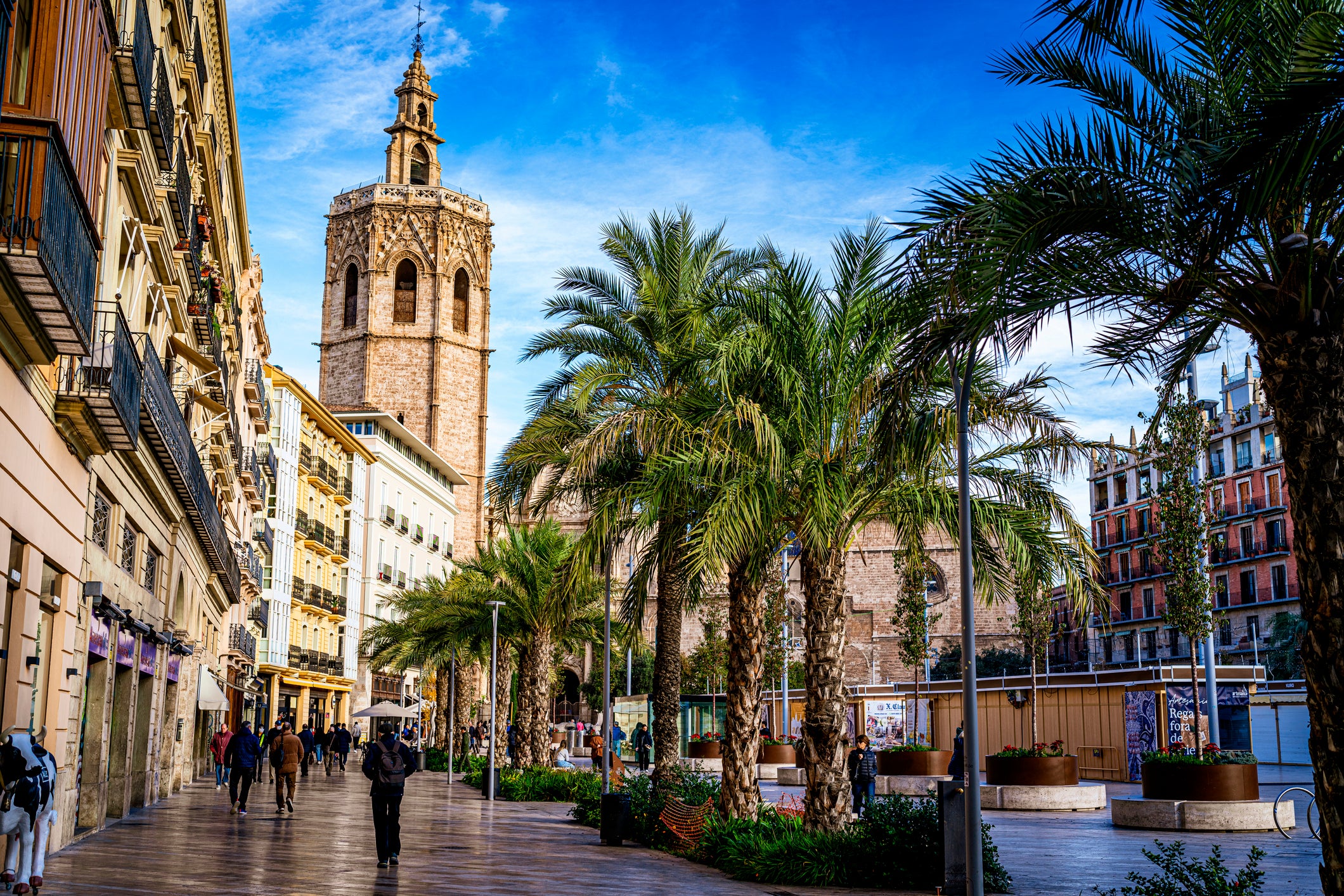
Has Espana had enough of the English? In Mallorca, locals march to demand we go home. On the Ramblas, enraged Catalans squirt water pistols at home counties types in linens. Lamp posts along the Costas are decorated with stickers denouncing guiris, the Spanish slang for boozy northern European tourists – by which they mean us.
But in Valencia, European green capital for 2024, everyone is welcome if they sign up for sustainable tourism. Even the English. Which is why I’m picking my way through light-industrial units on the outskirts of the Mediterranean city, looking for the first signs of the Horta – the system of fields introduced when the Moors arrived in the 8th century, and which still gifts Valencia its famed fresh produce.
In doing so, I’m supporting traditional food producers while also, perhaps, atoning for the many Englishmen (and women) presently getting drunk in Spain’s town squares and inflating the rental markets beyond locals’ reach. I’m trying to be a good tourist.
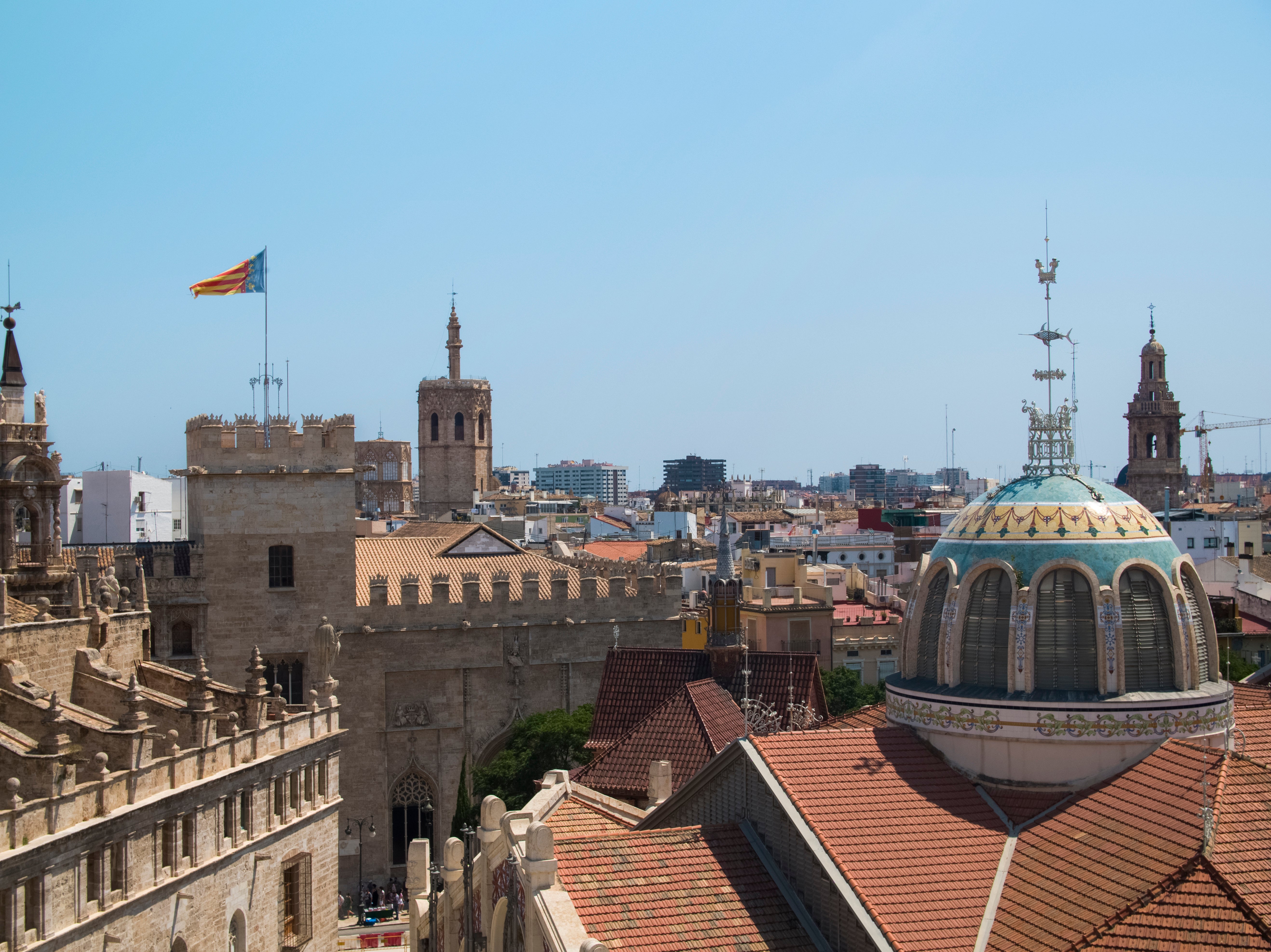
Already, to my childish delight, I’ve discovered the factory that makes fartons, the sweet, doughy fingers Valencians dip into horchata, a milky drink made from dried tuber of the chufa plant. Now, passing an old warehouse, I encounter an opera singer who breaks from her scales to wish me a cheery good evening.
Then I’m in the Horta proper, walking past fields of glossy green chufa watered by an irrigation system first introduced under Islamic rule.
The sun slides behind the high ridges of the Serra Calderona on the horizon as I come to a converted alqueria, one of the large farmhouses that dot the Horta, which reveals itself to be La Mozaira hotel and restaurant. Behind the walls the gardens are mint-scented and cool, the oranges still green on the trees and I dine on truly fabulous Valencian artichoke and cod on the veranda.
“It’s all about ingredients in Valencia,” says Steve Anderson, when I lunch at his Ma Khin Café the next day in the art nouveau wonder that is the Mercat Colon, a former produce market now home to restaurants, florists and, of course, a horchata stand.
The London-born restaurateur and long-time Valencia resident represents an alternative narrative of the English in Spain, creating zingy Anglo-Burmese dishes from the city’s unsurpassed produce.
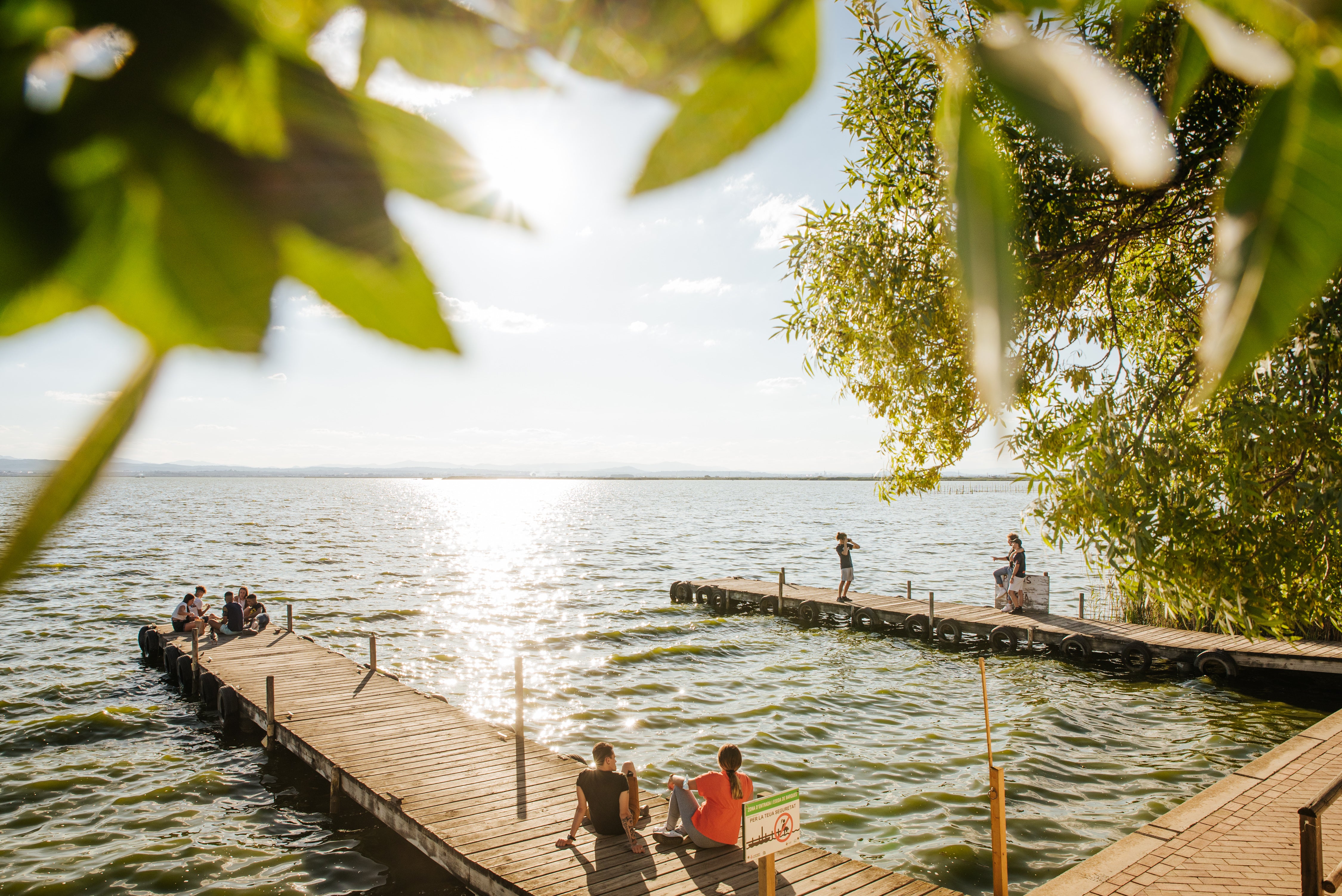
Much of that produce is piled up on stalls at the city’s other art nouveau wonder, the Mercat Central in the Old Town. Here I wander past serried rows of still-glinting fish, piles of candied fruit, stacks of cheeses and charcuterie, pyramids of peaches, dried laurel leaves and prickly arms of aloe.
Unlike Barcelona’s Boqueria, this is still very much a working market and tourist group visits are deliberately limited. The Old Town can be overwhelmed when the cruise ships disgorge but I’ve been directed to a series of specially developed walking and public transport Green routes through the city, and I tick off the gothic cathedral, spiral-columned Silk Exchange and more without overwhelming anyone.
I’ve downloaded a local water app showing drinking fountains, so won’t be leaving plastic behind me, and I need to hydrate before clambering up the Torres de Serrano fortified medieval gatehouses (pay €2 to get in) in 37C heat. From the top, I look down on the jumble of baking roofs on one side and the green course of the Jardin del Turia on the other.
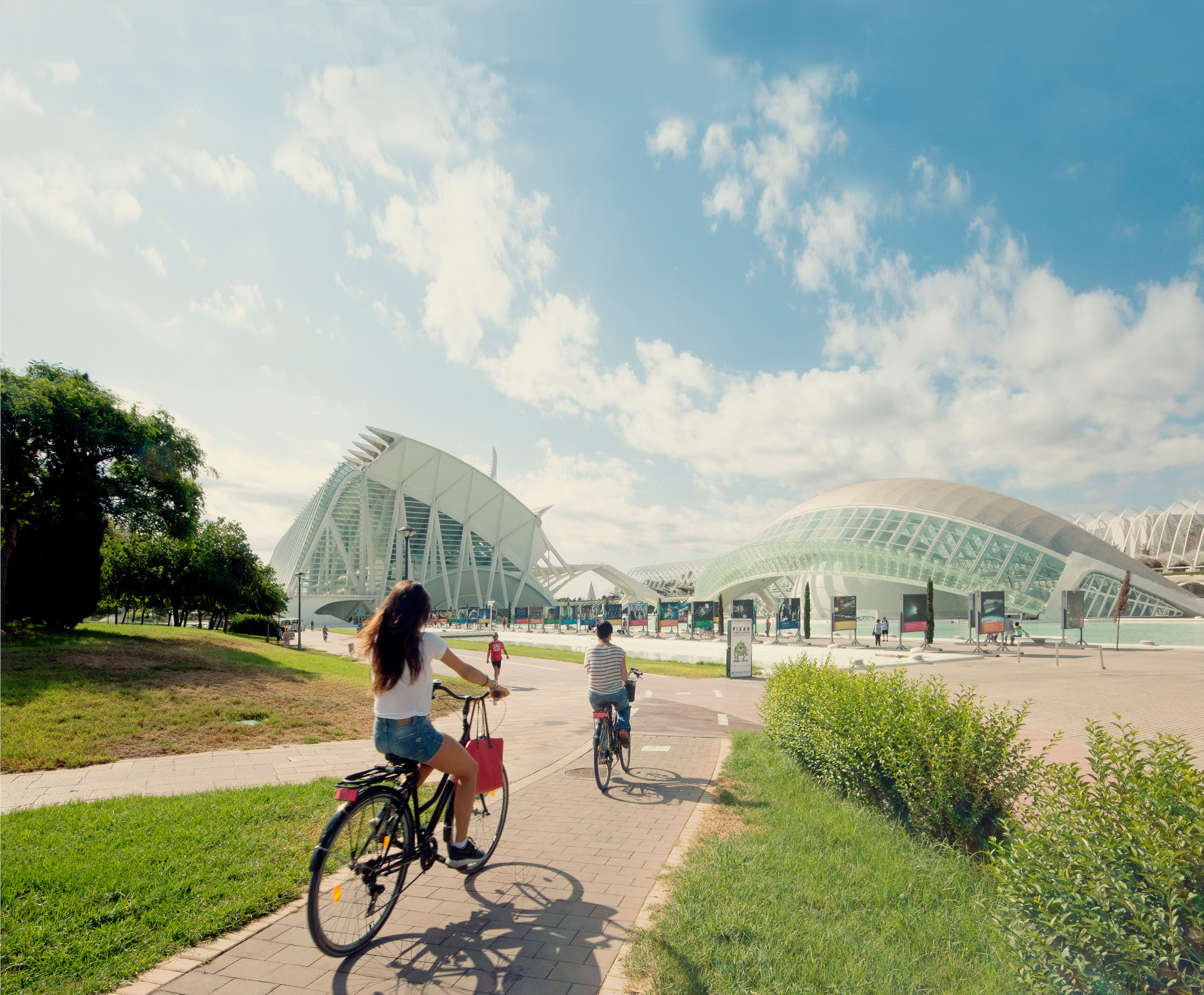
The 9km-long gardens, along the old bed of the now redirected Turia river, which cataclysmically flooded in 1957, only exist because Valencians demonstrated against plans to build a motorway in the last years of the Franco regime.
I silently thank them when I return later after joining a bike tour and free-wheel down a ramp from the car-thronged Calle del Pintor López to emerge in a shaded green world of bird song and palms.
This cycleway through the park leads on to the City of Arts and Sciences, the dazzling sculptural complex created in large part by the Valencian architect Santiago Calatrava around the turn of the 21st century. From here I could pedal on to the fresh-water lagoon at Albufera National Park, 10km south of the city though, in fierce heat, it’s wiser to get the number 24 bus from Porta de la Mar, which takes 47 minutes and costs €2.
The bus stops at the village of El Palmar where many people still live in waterside barracas, cottages with steeply pitched thatched roofs and their own jetties. Once dependent on fishing and rice production, today locals benefit from the income brought by tourists taking paying trips on the lake.

I join a group of Valencian visitors on a traditional wooden Albuferenc boat, and we slip through high reed beds before emerging on the main body of water. There are supposedly more than 300 species of birds that visit the lagoon, but the heat has chased all but swifts and cormorants away.
At noon, the llebeig (pronounced jey-betch) wind arrives to bend the reeds and set the boat’s yellow-and-red-barred Valencian pennant flapping.
Remarkably, we are still in the city limits. To prove it the white profile of Calatrava’s L’Assut de l’Or bridge at the City of Science and Arts appears through a gap in the reeds. The lagoon, where rice, snails and fowl are all available, is where paella originated, but there are many takes on the city’s signature dish.
I go upmarket and have the seafood version at the Las Arenas Hotel on the beach at Malvarrosa – a ritzy establishment that, nonetheless, helps protect the baby turtles that hatch on the beach.
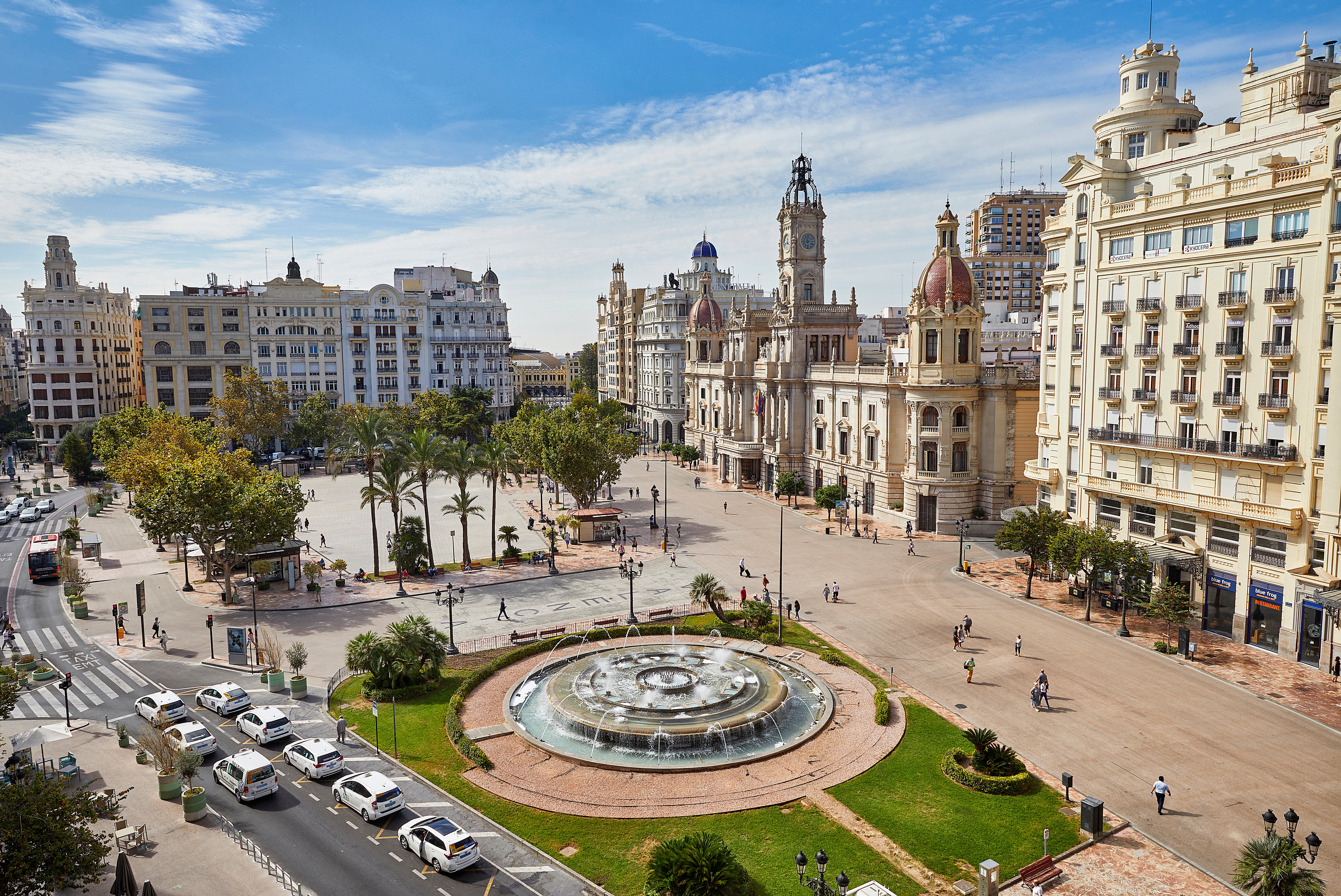
Here, a beaming Valencian waiter, keen that I enjoy his city’s patrimony to the full, cuts the crevettes, piles up the rice and gives me a special wooden spoon to eat with; an unusual but enjoyable experience in a five-star hotel.
Las Arenas was built on the remains of a neo-classical health spa that was partly destroyed in the 1936-39 Civil War. This Valencian need to recycle and make anew has reached an apogee at the Hortensia Herrero Art Centre in the old town.
Less than one year old, it is the creation of the billionaire Valencian businesswoman whose name it carries and who funded the $42m (£36m) conversion of the 16th-century Valeriola Palace on Calle del Mar into an outstanding contemporary art space with a world-class collection.
At the gallery’s heart, I find a work that is perhaps the greenest thing in the entire city, the Arrival of Spring in Woldgate, East Yorkshire in 2011 by David Hockney. One more Englishman who is very welcome in Valencia. Long may it last.
Subscribe to Independent Premium to bookmark this article
Want to bookmark your favourite articles and stories to read or reference later? Start your Independent Premium subscription today.


Join our commenting forum
Join thought-provoking conversations, follow other Independent readers and see their replies
Comments